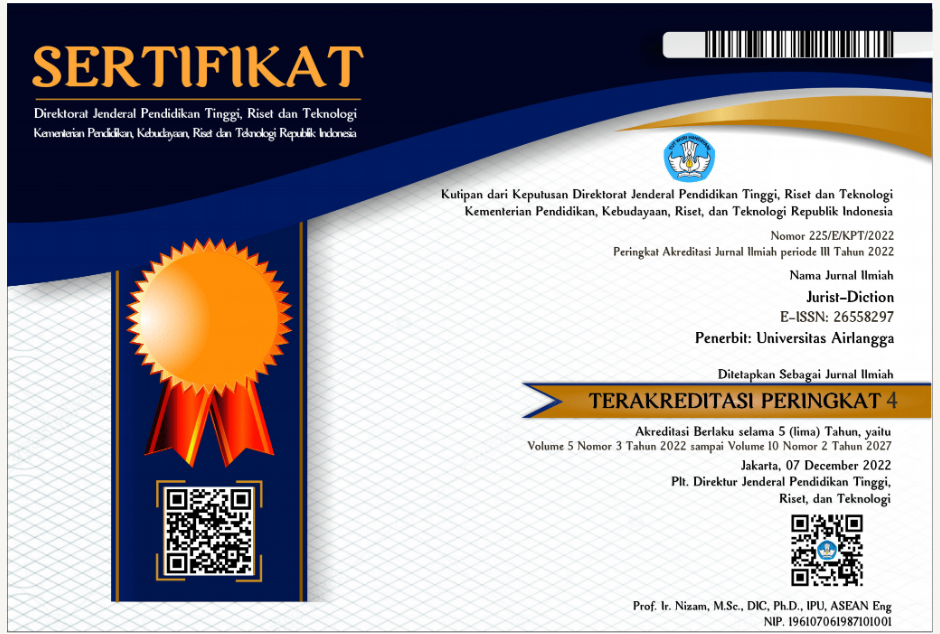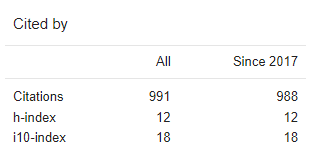Pertanggungjawaban Pidana bagi Pembuat Drug Design dalam Perspektif Hukum Narkotika
Downloads
The proliferation of technology has fueled the rise of drug abuse, giving rise to new modus operandi such as "Drug Design," where novel chemical compounds are synthesized to mimic the effects of illicit drugs without falling under existing drug laws. These "designer drugs," like PCC Pills," have caused severe mental health issues, fatalities, and pose a significant challenge to law enforcement due to their rapid molecular modifications. To address this emerging legal issue, this paper employs a normative legal research methodology to analyze the associated legal implications. Drug Design, stemming from the illicit practices of clandestine chemists, complicates law enforcement efforts due to the difficulty in classifying these novel substances. Collaboration between law enforcement agencies and chemists is crucial to determine appropriate legal sanctions. Despite regulatory efforts, the challenges of regulating and enforcing against Drug Design remain substantial, necessitating a cautious approach to both drug law enforcement and the regulation of emerging substances.
Buku
European Monitoring Centre for Drugs and Drug Addiction (EMCDDA) dan Europol, EMCDDA–Europol 2010 Annual Report on the implementation of Council Decision 2005/387/JHA (EMCDDA 2010). [4].
Kementerian Hukum dan HAM, Laporan Hasil Penyelarasan Naskah Akademik Rancangan Undang-Undang Tentang Perubahan Atas Undang-Undang Nomor 35 Tahun 2009 Tentang Narkotika, Jakarta, 2018.
Ornella Corazza et al, Handbook of Novel Psychoactive Substances What Clinicians Should Know About NPS (Routledge 2019). [1]
Peter Mahmud Marzuki, Penelitian Hukum (Kencana Prenada Media Group 2008.
Soedjono D., Hukum Narkotika Indonesia, Bandung, 1987.
Jurnal
Andriani Mutia Diah Pratiwi, Christiana, dan Rosita Dewi Eka Renel, ‘Revisi Undang-Undang Nomor 35 Tahun 2009 Tentang Narkotika: Pengaturan Zat Psikoaktif Baru’, Jurnal Kajian Stratejik Ketahanan Nasional, Vol. 5, No. 1, 2022.
Arthur Donald Herrick, Drug Products, Labeling, Packaging, Regulation, Revere Publishing Company, New York, 1942
Barri Dean, ‘What Are Those Ingredients You Are Mixing Up Behind Your Veil?’ (2018) 62 Howard Law Journal 1.
Bertha K. Madras, ‘Designer Drugs: An Escalating Public Health Challenge’ (2012), Vol.6 The Journal of Global Drug Policy and Practice. [16].
Bridgit O. Crews dan Matthew S. Petrie, 'Recent Trends in Designer Drug Abuse' (2015), Vol. 61 Clinical Chemistry.
Charles Fiki, ‘Globalization and Drug and Alcohol Use in Rural Communities in Nigeria: A Case Study’, Journal of Sociology and Social Welfare, Vol. 37, No. 2, 2007, h. 46.
Eliza Kurcevič dan Rick Lines, ‘New Psychoactive Substances in Eurasia: A Qualitative Study of People Who Use Drugs and Harm Reduction Services in Six Countries’, Harm Reduction Journal, Vol. 17, No. 94, 2020.
Erika Gebel Berg, ‘Designer Drug Detective Work’ (2016), Vol.2 ACS Central Science. [364].
Fadillah Sabri dan Siska Elvandari, ‘Penerapan Sanksi Pidana Terhadap Pelaku Tindak Pidana Tidak Memiliki Keahlian Dan Kewenangan Melakukan Praktik Kefarmasian Berdasarkan Undang-Undang Nomor 36 Tahun 2009 Tentang Kesehatan’ (2023) 3 Journal of Swara Justisia I 3.
François Chavant et al, ‘New Synthetic Drugs in Addictovigilance’ (2015), Vol. 70 Therapies. [179].
Kate Gooch dan James Treadwell, ‘Prisoner Society in an Era of Psychoactive Substances, Organized Crime, New Drug Markets and Austerity’ (2021) 60 British Journal of Criminology 1260.
Laura Adams, ‘New Psychoactive Substances: A Thematic Inspection Report’, Probation Journal, Vol. 65, No. 2.
Matthias E Liechti, ‘Novel Psychoactive Substances (Designer Drugs): Overview and Pharmacology of Modulators of Monoamine Signalling’, Swiss Medical Weekly, Vol. 144, No. 0304, 2015.
Siu Wa Tang and Wayne H. Tang, ‘Opportunities in Novel Psychotropic Drug Design from Natural Compounds’ (2019), Vol. 22 International Journal of Neuropsychopharmacology.
Timothy P. Stackhouse, ‘Regulators in Wackyland: Capturing the Last of the Designer Drugs’, Arizona Law Review, Vol. 54, No. 4, 2012.
Laman
BNN Editor, "Carisoprodol, Metamorfosis Sang Relaksan Otot", https://yogyakarta.bnn.go.id/carisoprodol-metamorfosis-sang-relaksan-otot/, diakses pada 25 Mei 2024.
"Daftar Obat Terlarang Selain Pil PCC Yang Sering Dikonsumsi Pelajar", https://desabandongan.magelangkab.go.id/First/detail_artikel/daftar-obat-terlarang-selain-pil-pcc-yang-sering-dikonsumsi-pelajar, diakses pada 25 Mei 2024.
David Gems, ‘Book Review : PIHKAL - a Chemial Love Story & TIHKAL - The Continuation’, https://www.ucl.ac.uk/~ucbtdag/bioethics/writings/shulgin.html, dikunjungi pada 4 Juni 2024.
“DXM Misuse: Signs, Effects & Addiction Treatment", https://oxfordtreatment.com/substance-abuse/hallucinogens/dxm/, diakses pada 25 Mei 2024.
Fabian Januarius Kuwado, 'Ahli Farmasi-Kimia Berperan Dalam Sindikat Narkoba’, https://money.kompas.com/read/2013/02/01/0846123/~Megapolitan~News, diakses pada 25 Mei 2024.
"PCC?", https://cirebonkota.bnn.go.id/pcc/#:~:text=Apa sebenarnya pil PCC %3F,muda karena harganya yang murah, diakses pada 25 Mei 2024.
The Crown Prosecution Service, "Psychoactive Substances", https://www.cps.gov.uk/legal-guidance/psychoactive-substances, diakses pada 24 April 2024.
Perundang-undangan
Peraturan Menteri Kesehatan Nomor 10 Tahun 2022 tentang Penetapan dan Perubahan Penggolongan Psikotropika
Peraturan Menteri Kesehatan Nomor 30 Tahun 2023 tentang Perubahan Penggolongan Narkotika
Undang-Undang Nomor 5 Tahun 1997 tentang Psikotropika (Lembar Negara Republik Indonesia Tahun 1997 Nomor 10, Tambahan Lembar Negara Republik Indonesia Nomor 3671)
Undang-Undang Nomor 17 Tahun 2023 tentang Kesehatan (Lembaran Negara Republik Indonesia Tahun 2023 Nomor 105, Tambahan Lembaran Negara Republik Indonesia Nomor 6887)
Undang-Undang Nomor 35 Tahun 2009 tentang Narkotika (Lembaran Negara Republik Indonesia Tahun 2009 Nomor 143, Tambahan Lembaran Negara Republik Indonesia Nomor 5062)
Copyright (c) 2025 Aulia Rahma Sari

This work is licensed under a Creative Commons Attribution 4.0 International License.
Jurist-Diction (P-ISSN 2721-8392, E-ISSN 2655-8297), published by Universitas Airlangga, is licensed under the Creative Commons Attribution 4.0 International License (CC BY 4.0).
This license permits users to:
- Share – copy and redistribute the material in any medium or format;
- Adapt – remix, transform, and build upon the material for any purpose, including commercial use.
These freedoms are granted under the following conditions:
Attribution – You must provide appropriate credit, include a link to the license, and indicate if any changes were made. This may be done in any reasonable manner, but not in a way that suggests the licensor endorses you or your use.
No additional restrictions – You may not apply legal terms or technological measures that restrict others from exercising the rights granted under the license.
Note: As of Volume 5, No. 1 (2022), Jurist-Diction has adopted the Creative Commons Attribution 4.0 International License (CC BY 4.0), replacing its previous license (CC BY-NC-SA).


















